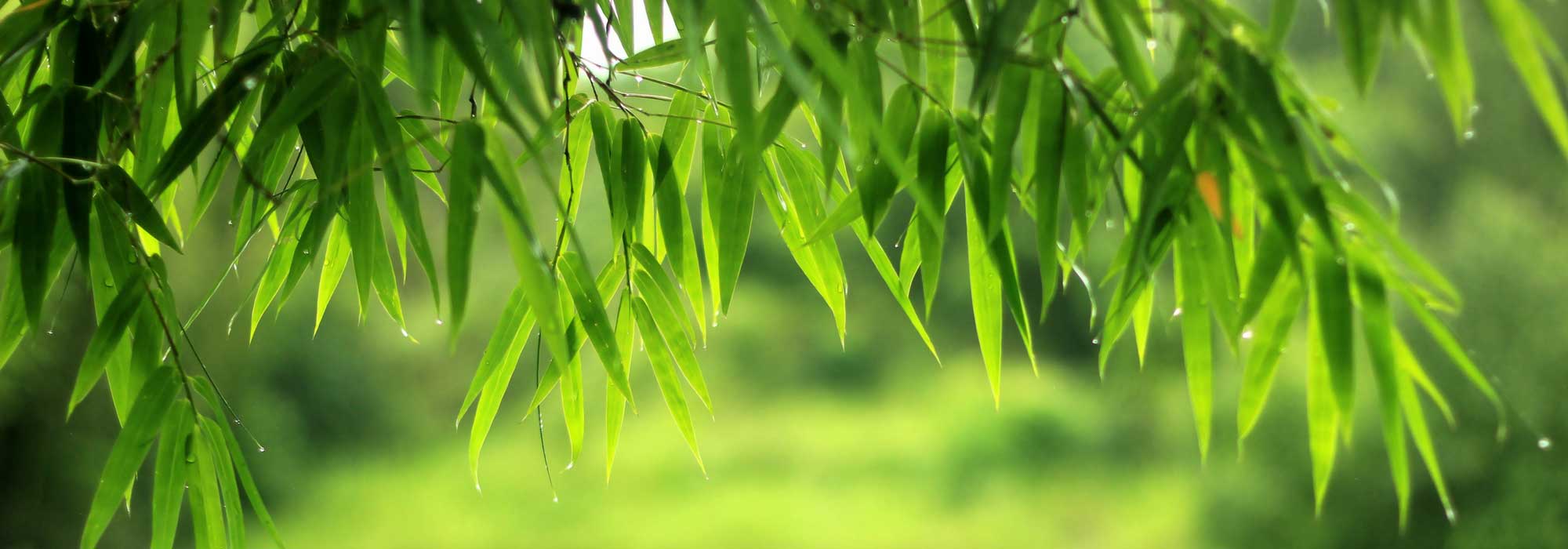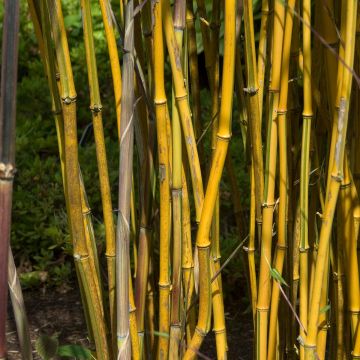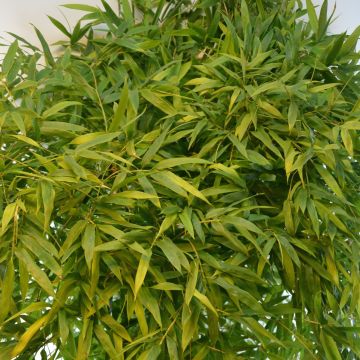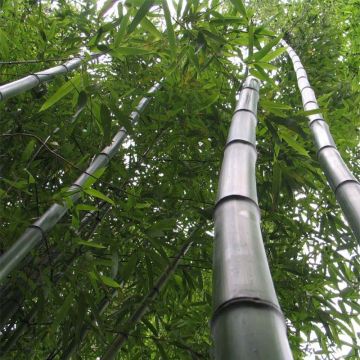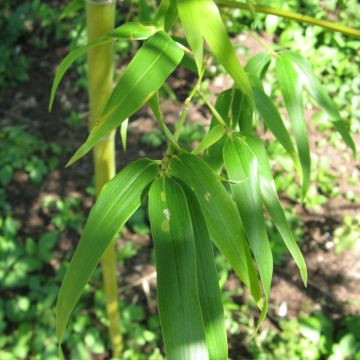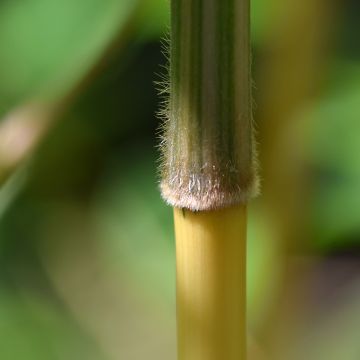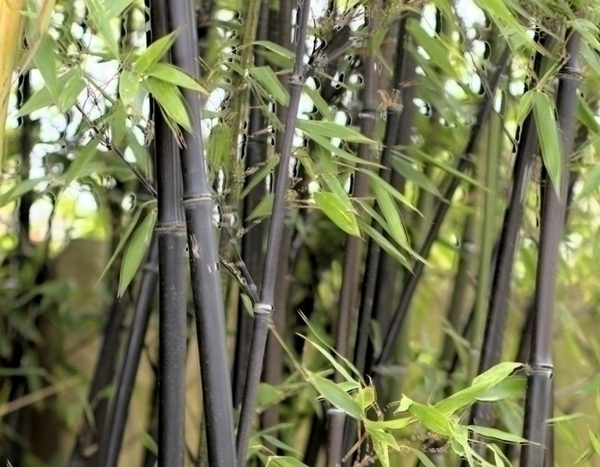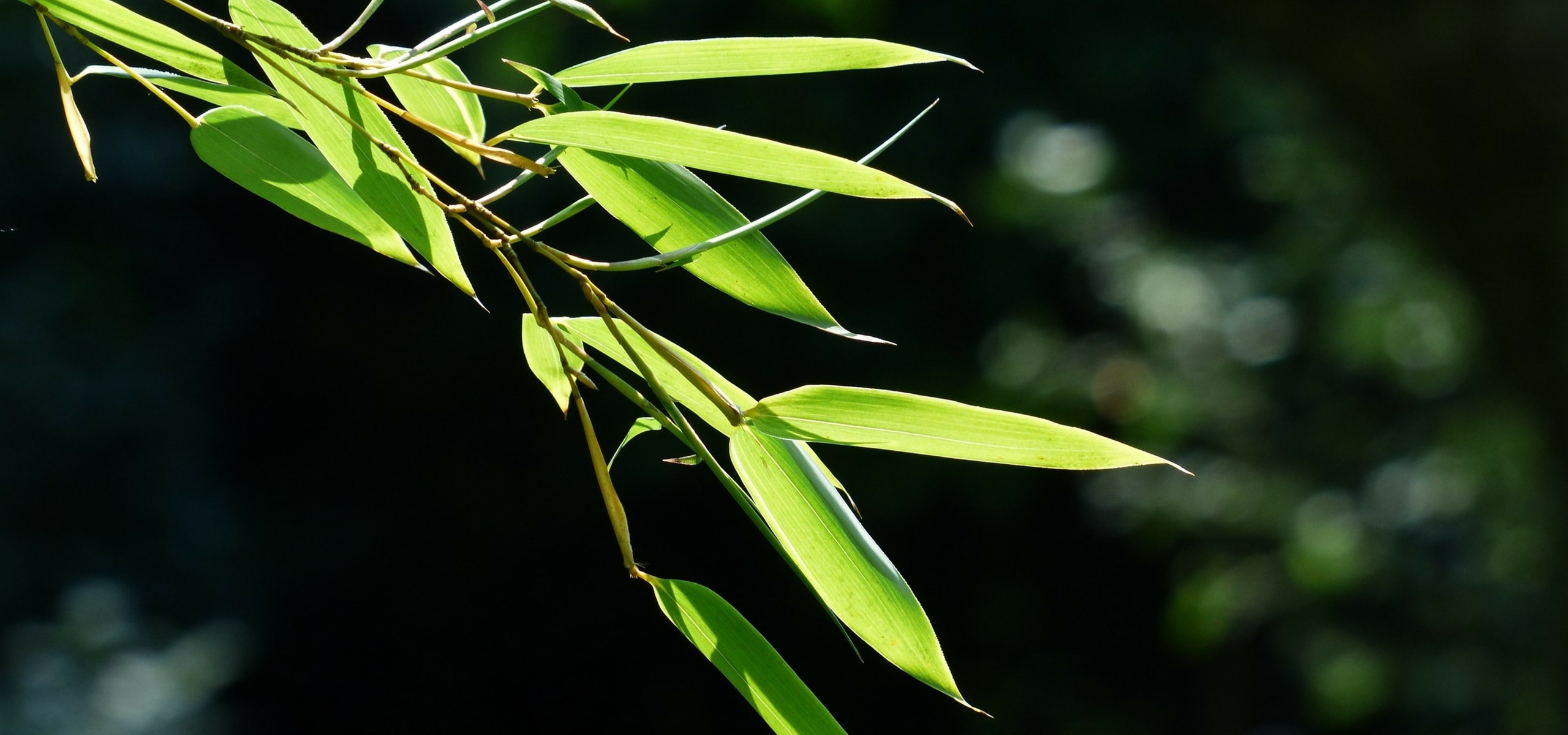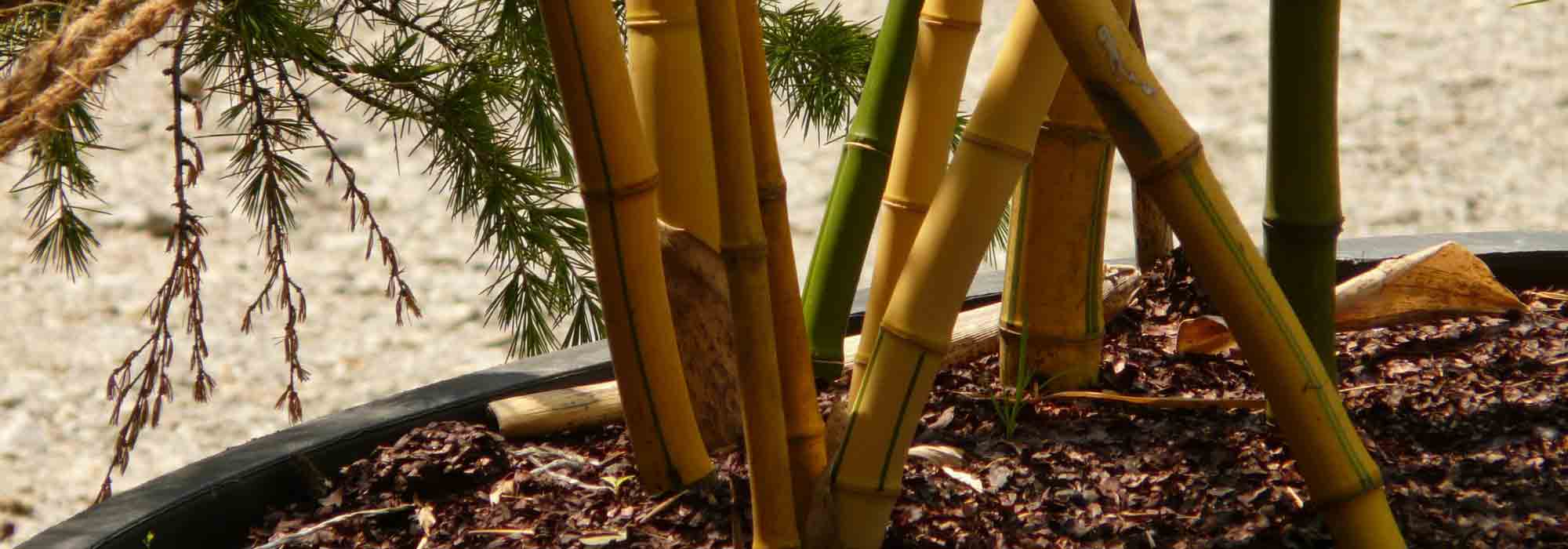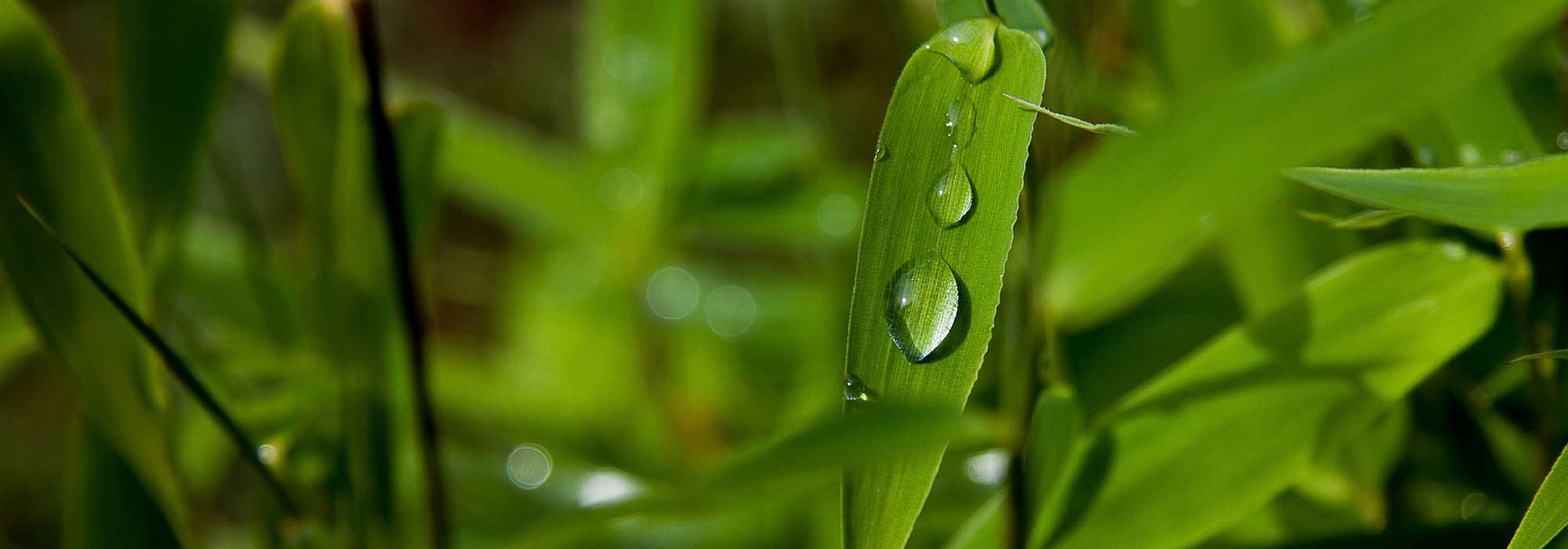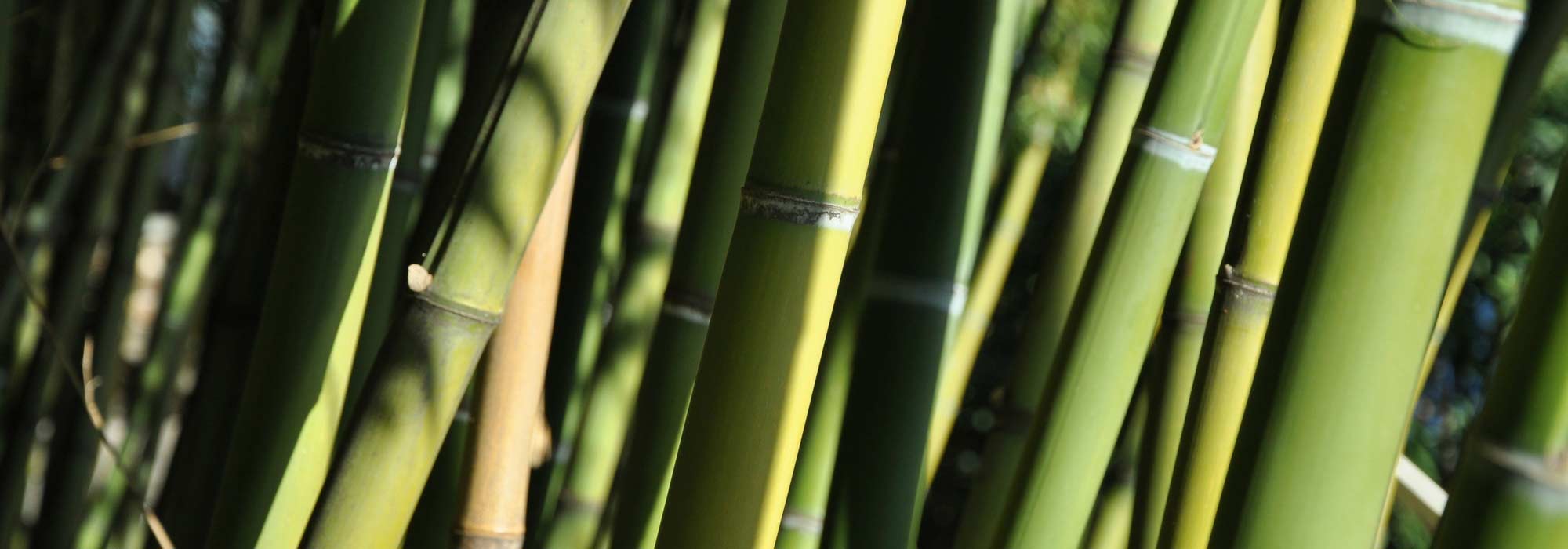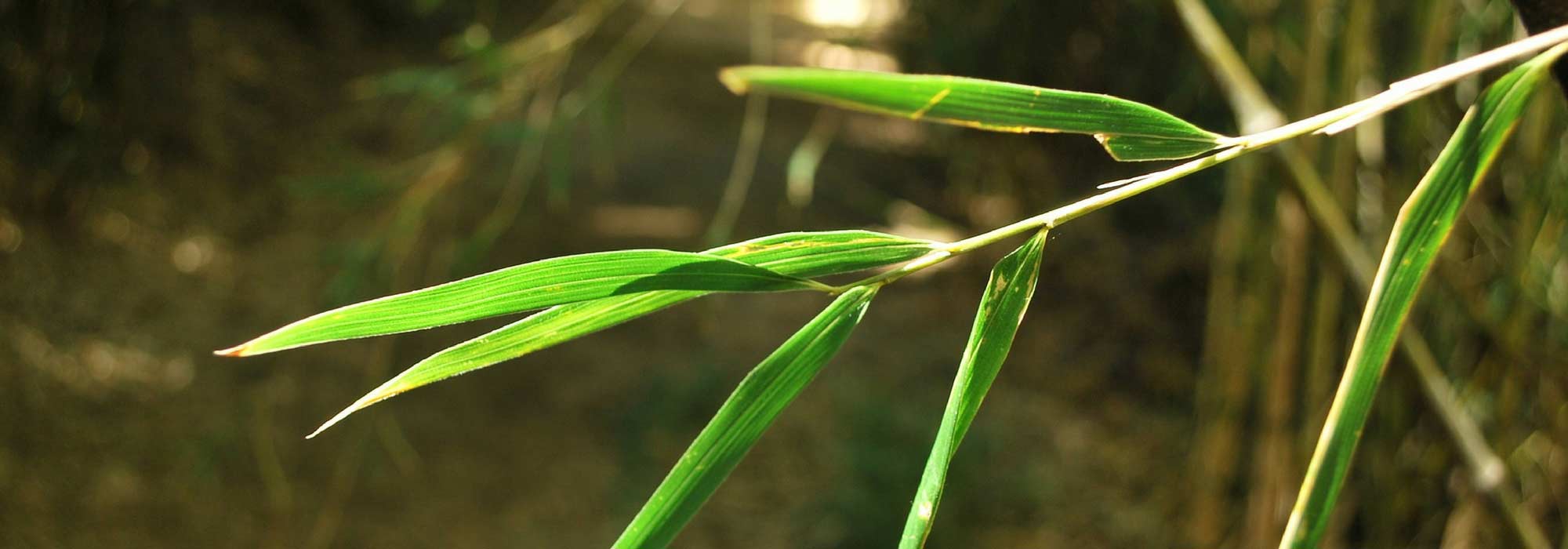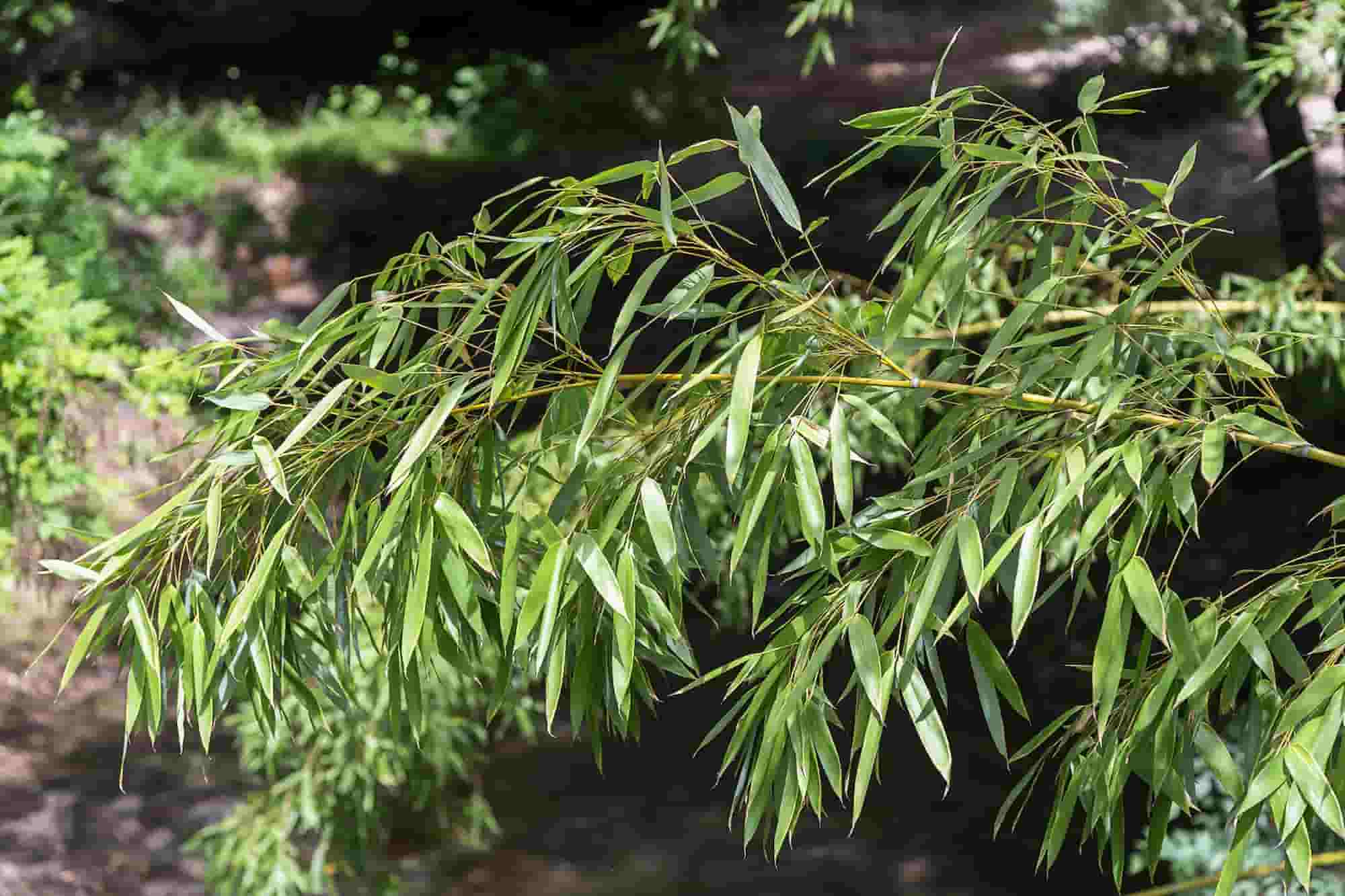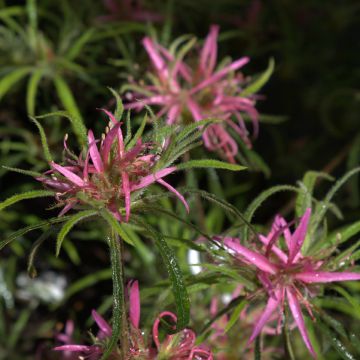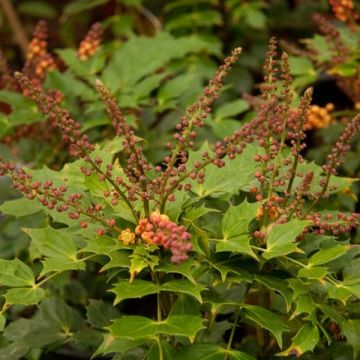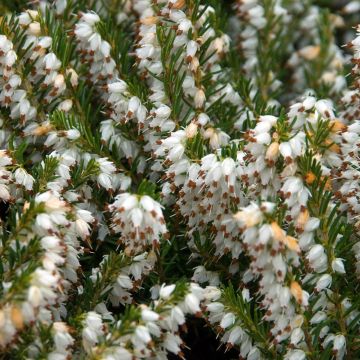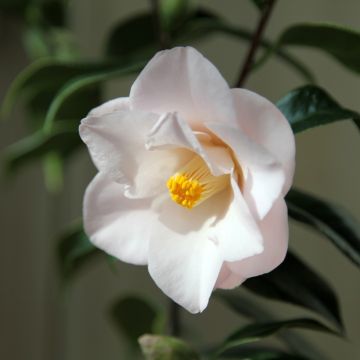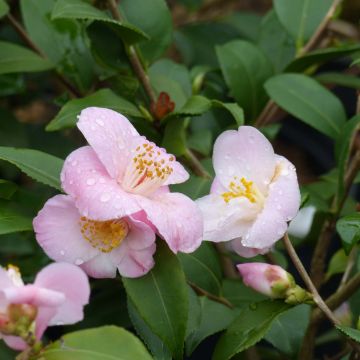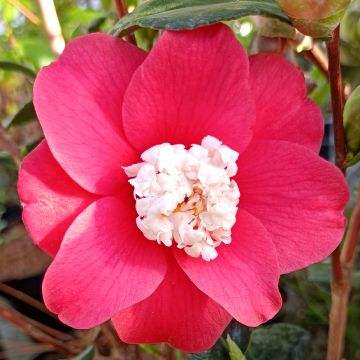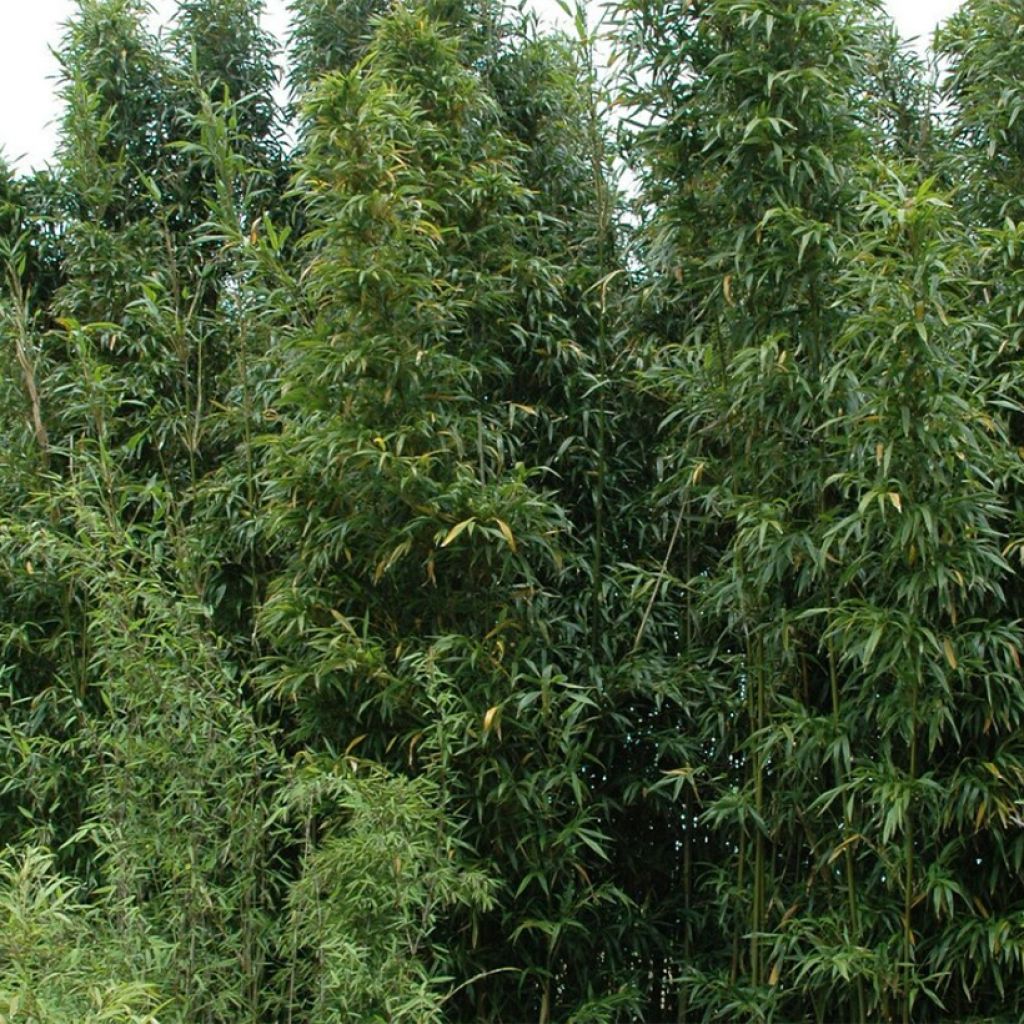

Semiarundinaria fastuosa var. viridis
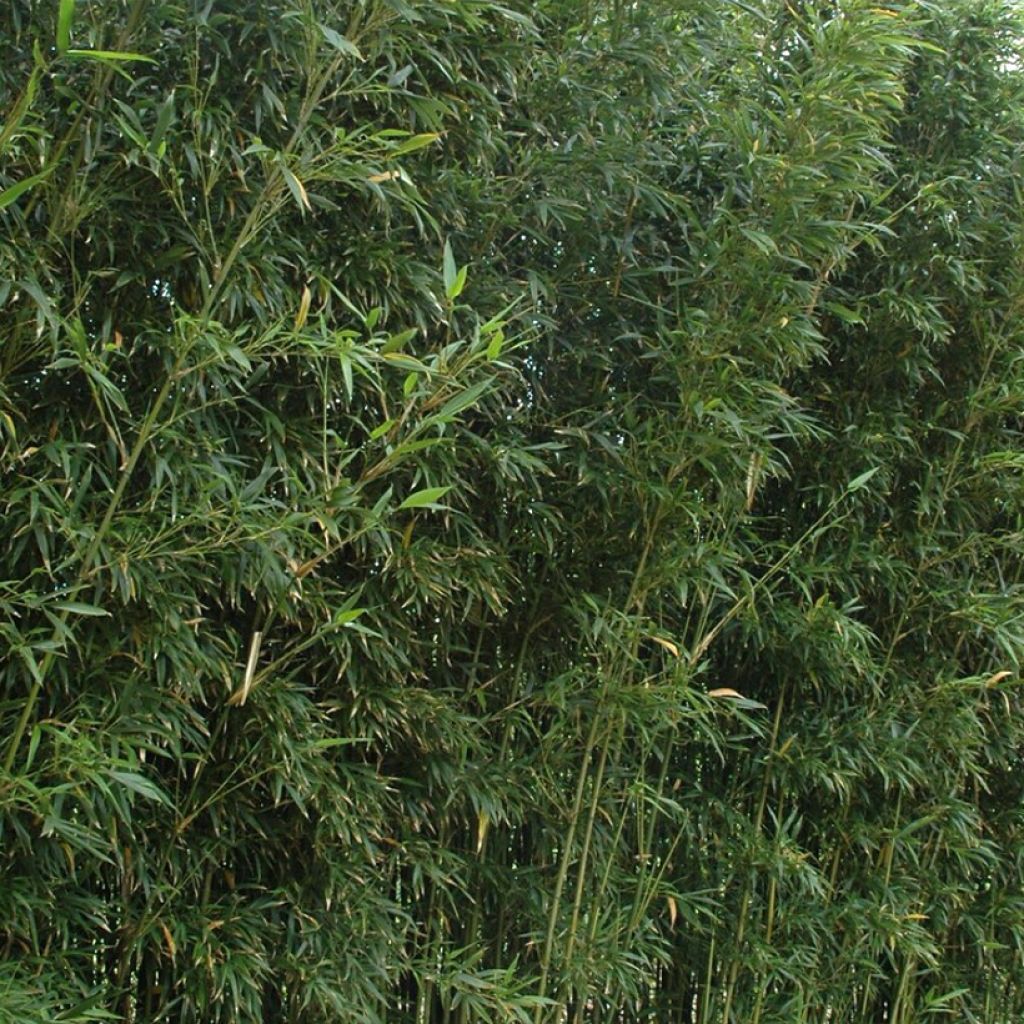

Semiarundinaria fastuosa var. viridis
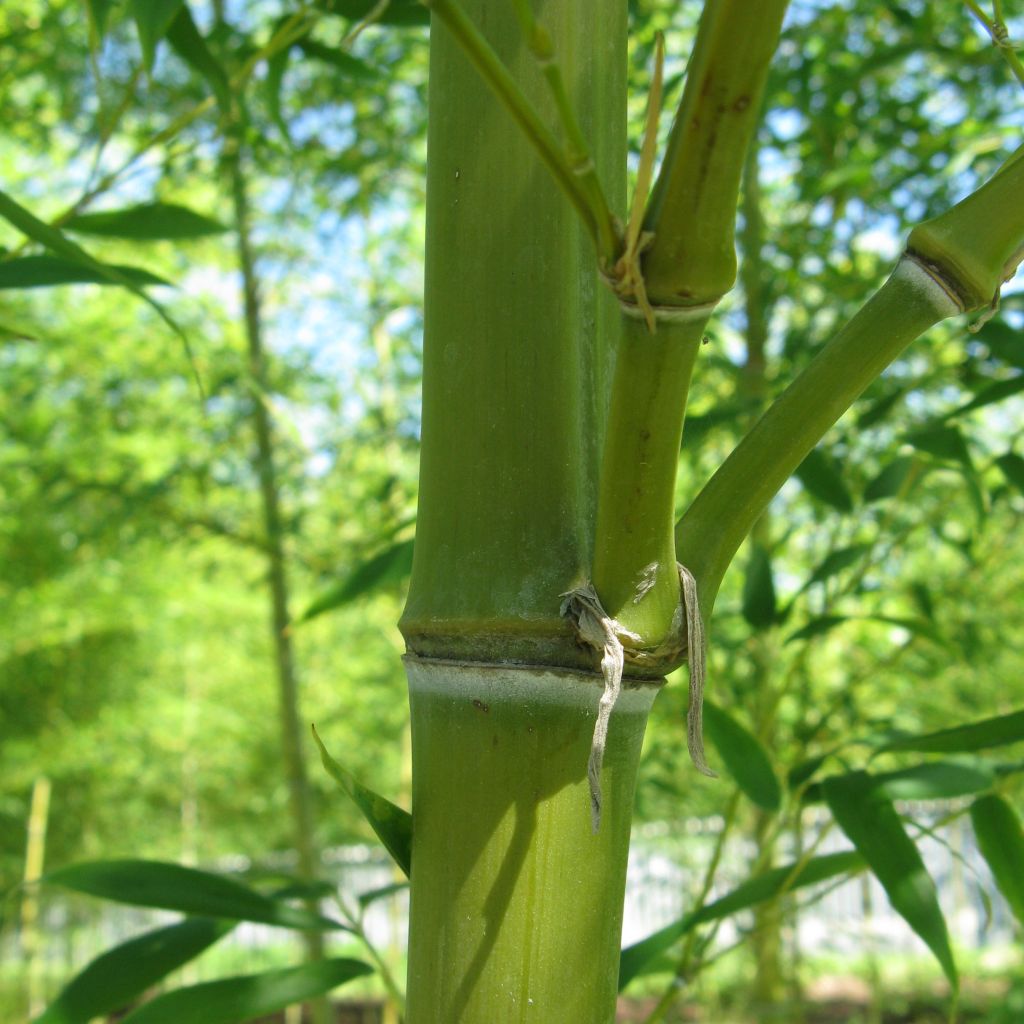

Semiarundinaria fastuosa var. viridis
Semiarundinaria fastuosa var. viridis
Semiarundinaria fastuosa Viridis
Narihira Bamboo, Temple Bamboo
Planted in the ground for over a year and a half now in the recommended setup conditions described. Lovely foliage, hardly spreads and stays at 2m (7ft) even when new canes are growing. A bit disappointed on this point as I was looking for a bamboo that would reach at least 6m (20ft) for the visual aspect.
Loïc, 23/08/2022
Special offer!
Receive a €20 voucher for any order over €90 (excluding delivery costs, credit notes, and plastic-free options)!
1- Add your favorite plants to your cart.
2- Once you have reached €90, confirm your order (you can even choose the delivery date!).
3- As soon as your order is shipped, you will receive an email containing your voucher code, valid for 3 months (90 days).
Your voucher is unique and can only be used once, for any order with a minimum value of €20, excluding delivery costs.
Can be combined with other current offers, non-divisible and non-refundable.
Home or relay delivery (depending on size and destination)
Schedule delivery date,
and select date in basket
This plant carries a 24 months recovery warranty
More information
We guarantee the quality of our plants for a full growing cycle, and will replace at our expense any plant that fails to recover under normal climatic and planting conditions.
Would this plant suit my garden?
Set up your Plantfit profile →
Description
Semiarundinaria fastuosa var. viridis is a remarkable Bamboo with exceptional qualities, ideal in size for tall hedges, privacy screens, and windbreaks. It is non-invasive and extremely hardy, and beautifully decorative with its compact columnar habit, green canes, and dense foliage. Its aesthetics, architectural design, and the rustling of the wind through its leaves will transport your garden to the Land of the Rising Sun!
Belonging to the Poaceae/Grass family, Semiarundinaria fastuosa is a majestic clump-forming Japanese bamboo, with an extraordinarily vertical and compact columnar habit, and rapid and vigorous growth. The Viridis cultivar distinguishes itself from the species with greener vegetation and slightly smaller size. This tall bamboo, forming narrow columns 2m (7ft) wide, presents very straight and perfectly cylindrical, dark green canes measuring 4cm (2in) in diameter. These large canes rise up to 5-6m (16-20ft) and bear short branches along their entire length. Its evergreen, dense, and flexible foliage is composed of large lanceolate, shiny green leaves, measuring approximately 10cm (4in). The sheaths of the canes are pearly purple and semi-persistent. They remain attached to the canes for 3 months before falling off, creating a beautiful contrast between the colours of the sheath, the canes, and the leaves. In Japan, the straight and cylindrical canes of this bamboo are used to make flutes. The young shoots of this bamboo are edible.
This wind-resistant giant Bamboo, with its compact columnar habit, dense evergreen foliage and green canes, is ideal for creating tall hedges, or a magnificent green screen to hide a neighbour's view or form a windbreak. For a hedge planting, it is advisable to maintain a planting distance of 1m (3ft) to 1.50m (5ft) between each bamboo. This noble Bamboo can also be planted in the garden as a solitary clump, alongside other bamboo or large trees, such as a Caramel Tree, Flowering Dogwood, Chinese Fan Palm, or Tree Fern. It can be associated with other Asian plants, such as Japanese Grasses or Mountain Laurels. All of these uses will create highly exotic and artistic scenes.
Semiarundinaria fastuosa var. viridis in pictures
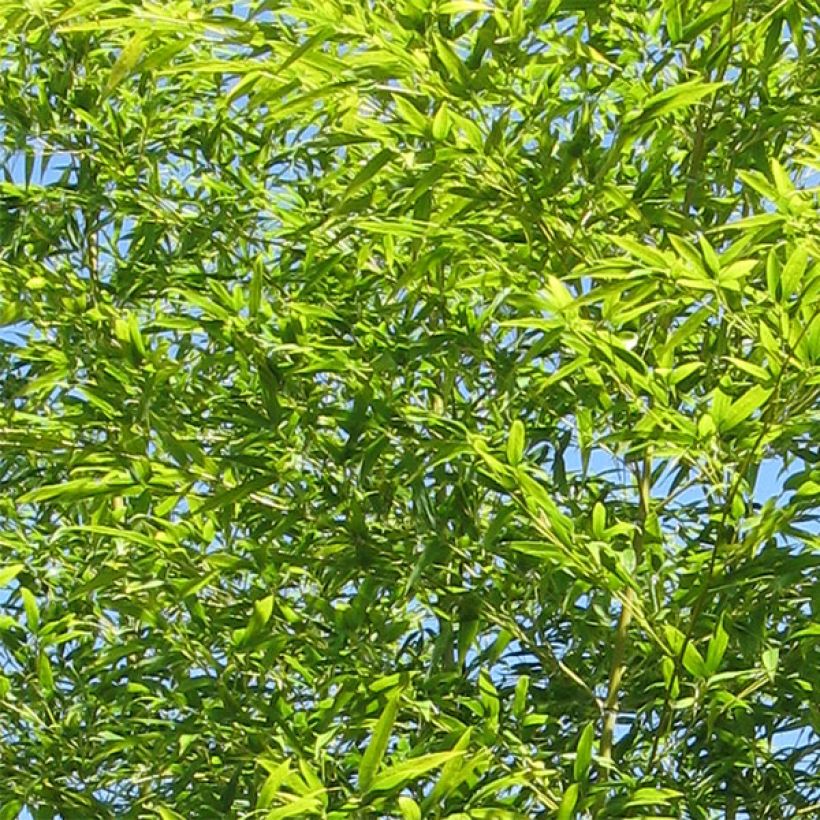

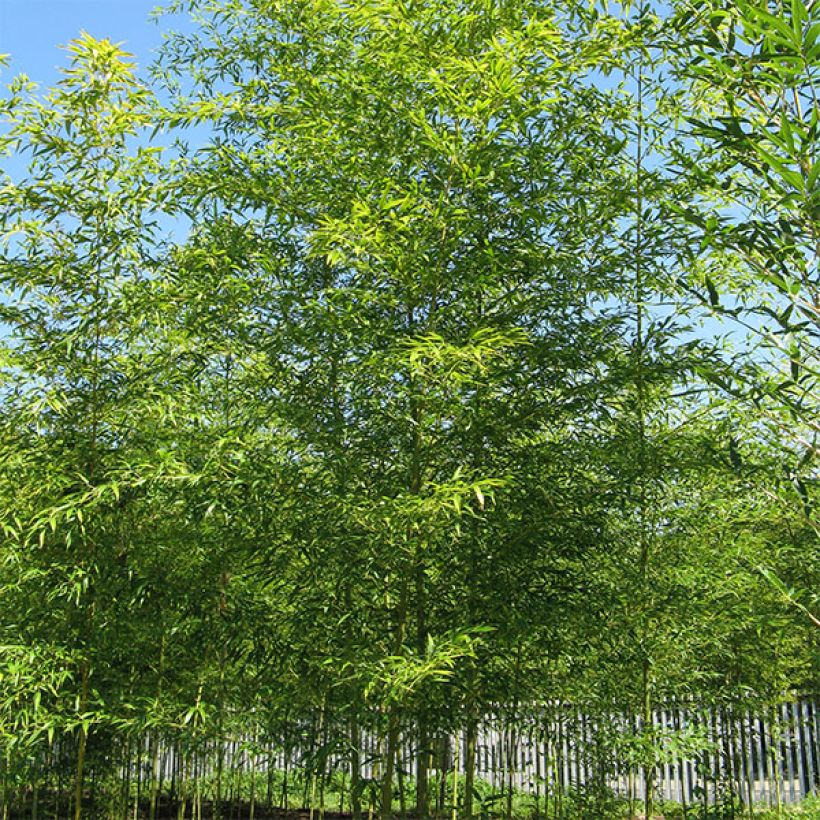

Plant habit
Foliage
Botanical data
Semiarundinaria
fastuosa
Viridis
Poaceae
Narihira Bamboo, Temple Bamboo
East Asia
Other Spreading Bamboo
View all →Planting and care
Semiarundinaria fastuosa var. viridis is an easy-to-grow bamboo, sturdy, wind-resistant, and with excellent hardiness, tolerating temperatures down to -22°C (1°F). It is undemanding in terms of soil quality but dislikes excess limestone and water. Ordinary, neutral to acidic soil will suit it, however, a deep, humus-rich, and moist soil will be beneficial. Not liking excess water and overly wet soils, the soil must be well-draining. This bamboo thrives in partial shade as well as in sunlight. It is best to plant this Bamboo in late summer or autumn to ensure optimal rooting and development. During planting, it is recommended to install a rhizome barrier to limit its spread. Once well-established, this bamboo tolerates drought quite well. Propagation is done by rootstock cutting or clump division. The only maintenance required is to remove dried canes between April and September. An organic fertilizer can be applied at the base of the Bamboo in spring.
Planting period
Intended location
Care
Planting & care advice
-
, onOrder confirmed
Reply from on Promesse de fleurs
Similar products
Haven't found what you were looking for?
Hardiness is the lowest winter temperature a plant can endure without suffering serious damage or even dying. However, hardiness is affected by location (a sheltered area, such as a patio), protection (winter cover) and soil type (hardiness is improved by well-drained soil).

Photo Sharing Terms & Conditions
In order to encourage gardeners to interact and share their experiences, Promesse de fleurs offers various media enabling content to be uploaded onto its Site - in particular via the ‘Photo sharing’ module.
The User agrees to refrain from:
- Posting any content that is illegal, prejudicial, insulting, racist, inciteful to hatred, revisionist, contrary to public decency, that infringes on privacy or on the privacy rights of third parties, in particular the publicity rights of persons and goods, intellectual property rights, or the right to privacy.
- Submitting content on behalf of a third party;
- Impersonate the identity of a third party and/or publish any personal information about a third party;
In general, the User undertakes to refrain from any unethical behaviour.
All Content (in particular text, comments, files, images, photos, videos, creative works, etc.), which may be subject to property or intellectual property rights, image or other private rights, shall remain the property of the User, subject to the limited rights granted by the terms of the licence granted by Promesse de fleurs as stated below. Users are at liberty to publish or not to publish such Content on the Site, notably via the ‘Photo Sharing’ facility, and accept that this Content shall be made public and freely accessible, notably on the Internet.
Users further acknowledge, undertake to have ,and guarantee that they hold all necessary rights and permissions to publish such material on the Site, in particular with regard to the legislation in force pertaining to any privacy, property, intellectual property, image, or contractual rights, or rights of any other nature. By publishing such Content on the Site, Users acknowledge accepting full liability as publishers of the Content within the meaning of the law, and grant Promesse de fleurs, free of charge, an inclusive, worldwide licence for the said Content for the entire duration of its publication, including all reproduction, representation, up/downloading, displaying, performing, transmission, and storage rights.
Users also grant permission for their name to be linked to the Content and accept that this link may not always be made available.
By engaging in posting material, Users consent to their Content becoming automatically accessible on the Internet, in particular on other sites and/or blogs and/or web pages of the Promesse de fleurs site, including in particular social pages and the Promesse de fleurs catalogue.
Users may secure the removal of entrusted content free of charge by issuing a simple request via our contact form.
The flowering period indicated on our website applies to countries and regions located in USDA zone 8 (France, the United Kingdom, Ireland, the Netherlands, etc.)
It will vary according to where you live:
- In zones 9 to 10 (Italy, Spain, Greece, etc.), flowering will occur about 2 to 4 weeks earlier.
- In zones 6 to 7 (Germany, Poland, Slovenia, and lower mountainous regions), flowering will be delayed by 2 to 3 weeks.
- In zone 5 (Central Europe, Scandinavia), blooming will be delayed by 3 to 5 weeks.
In temperate climates, pruning of spring-flowering shrubs (forsythia, spireas, etc.) should be done just after flowering.
Pruning of summer-flowering shrubs (Indian Lilac, Perovskia, etc.) can be done in winter or spring.
In cold regions as well as with frost-sensitive plants, avoid pruning too early when severe frosts may still occur.
The planting period indicated on our website applies to countries and regions located in USDA zone 8 (France, United Kingdom, Ireland, Netherlands).
It will vary according to where you live:
- In Mediterranean zones (Marseille, Madrid, Milan, etc.), autumn and winter are the best planting periods.
- In continental zones (Strasbourg, Munich, Vienna, etc.), delay planting by 2 to 3 weeks in spring and bring it forward by 2 to 4 weeks in autumn.
- In mountainous regions (the Alps, Pyrenees, Carpathians, etc.), it is best to plant in late spring (May-June) or late summer (August-September).
The harvesting period indicated on our website applies to countries and regions in USDA zone 8 (France, England, Ireland, the Netherlands).
In colder areas (Scandinavia, Poland, Austria...) fruit and vegetable harvests are likely to be delayed by 3-4 weeks.
In warmer areas (Italy, Spain, Greece, etc.), harvesting will probably take place earlier, depending on weather conditions.
The sowing periods indicated on our website apply to countries and regions within USDA Zone 8 (France, UK, Ireland, Netherlands).
In colder areas (Scandinavia, Poland, Austria...), delay any outdoor sowing by 3-4 weeks, or sow under glass.
In warmer climes (Italy, Spain, Greece, etc.), bring outdoor sowing forward by a few weeks.






























